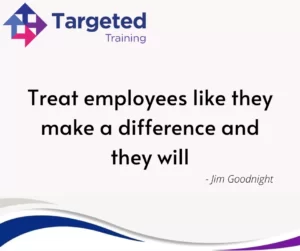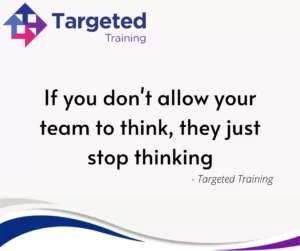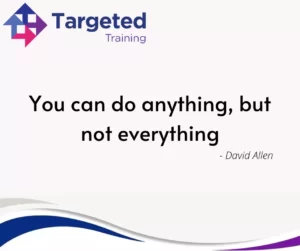By Sarah Regan
Expert review by Kristina Hallett, Ph.D., ABPP
May 31, 2022
Of all the personality assessments out there, one reigns supreme as perhaps the most popular and well known: the MBTI. “MBTI” stands for the Myers-Briggs Type Indicator, and the nearly 100-year-old questionnaire has become a standby among all the tests out there.
Here’s what to know about the MBTI, what research and personality experts think about the test, and how you can work with your results.
In This Article
What is the Myers-Briggs Type Indicator (MBTI)?
The Myers-Briggs Type Indicator is a personality assessment that groups people into one of 16 categories. To do this, the MBTI asks questions based on four categories of preferences: extroverted versus introverted, sensing versus intuiting, thinking versus feeling, and judging versus perceiving. Virtually everyone will fall toward one end of the spectrum for each of the four categories, resulting in a four-letter combination, or “type” (e.g., ESTP, INFJ, etc.).
According to John Hackston, the head of thought leadership at The Myers-Briggs Company, it’s important to note that while the MBTI is often called a test, there are no right or wrong answers, with each type having its own strengths and weaknesses. So, “test” really isn’t an accurate word.
“The MBTI isn’t just a test or assessment. It’s a process,” he tells mbg. “So we don’t say, ‘Here are the results, good luck.’ We say, ‘Here are the results; now let’s talk that through to help make the results more relevant to your reality.’”
Today, the MBTI has become one of the most popular, well-researched, and well-known personality assessments of our time—but it does receive its fair share of criticism (which we’ll get into later on).
How the Myers-Briggs assessment works.
The MBTI questionnaire looks to identify where among each of four preference categories you fall, in order to come up with your four-letter type.
According to Dario Nardi, Ph.D., personality expert and author of Neuroscience of Personality, the word “preference” here is key. “As in, what is it you prefer to do in various situations?” he notes. For example, someone who’s introverted may typically prefer to spend time alone, but that doesn’t mean they never enjoy the company of others.
You can take the assessment online, though Hackston says you can also work with someone who’s trained in the MBTI, to find out your type and how to work with it.
All of the questions in the assessment, Nardi adds, will relate to the four preference categories. Here’s a breakdown of each of those categories:
Extroversion (E) – Introversion (I)
Extroversion versus introversion refers to how you get your energy. Extroverts feel energized by spending time with others, while introverts prefer to recharge on their own. As psychologist Kristina Hallett, Ph.D., ABPP, previously explained to mbg, extroverts are “enlivened by crowds, parties, and spending time with others,” while introverts “prefer to re-energize through quiet time and solitary pursuits.”
She adds that most of us are likely a mix of both (aka an “ambivert“), though “your type depends on which one you tend to gravitate toward more.”
Sensing (S) – Intuition (N)
Sensing versus intuition is all about thought processes and how you gather information. “I think of sensing as information gathering through the here-and-now physical senses and generally more grounded in practicality. Intuition is information gathering from a broader, more ‘big-picture’ perspective, making links between patterns that may not be as easily seen from the specific in-the-moment view,” Hallett explains.
Thinking (T) – Feeling (F)
Thinking versus feeling is about how you prefer to make decisions. Think of it as the competition between “head versus heart.” Those with a preference for feeling prefer to follow their values, emotions, and relationships, while those who prefer thinking make decisions based on logic and facts.
Judging (J) – Perceiving (P)
Lastly, judging versus perceiving relates to how you approach your life, especially when it comes to planning for things to come. Someone with a preference for judging will feel supported and secure with the help of things like schedules, structure, and clearly defined expectations. A preference for perceiving, meanwhile, likes flexibility and spontaneity, and may actually be turned off by too much structure and routine.
The 16 MBTI personality types.
The development of the MBTI.
According to both Hackston and Nardi, the MBTI was first inspired by the work of Swiss psychiatrist Carl Jung. In 1921, he published a book called Psychological Type, where he first introduced his therapeutic framework for understanding “forms of consciousness—the ways people make decisions and gather information and in general, how they think about things internally,” Nardi explains.
His ideas were then picked up by Katharine Cook Briggs and, later on, her daughter Isabel Briggs Myers. “Isabel developed the first version of the MBTI, so that’s why it’s called the Myers-Briggs Type Indicator—because it was Isabel and her mother who were ultimately behind it,” Hackston explains.
From there, the first commercial version of the MBTI came out in 1977, he says. And since then, a lot of research has been done to modify and improve it. The most recent development of what Hackston calls the “new global version” of the MBTI is just over a few years old, having been updated in 2018.
Research on the MBTI.
According to Nardi, the MBTI is the most researched personality assessment in the world. That said, the jury is still out on to whether the test is accurate. Some research and personality experts question the MBTI’s validity. According to one study published in the journal Social and Personality Psychology Compass in 2019, “the MBTI theory falters on rigorous theoretical criteria in that it lacks agreement with known facts and data, lacks testability, and possesses internal contradictions.”
It’s also worth noting that some of the research in support of the MBTI’s validity is funded by companies that sell the assessment and follow-up materials, calling conflicts of interest into question.
But some studies have indeed found the MBTI to be a good measure of personality. In a 2002 study published in the journal Educational and Psychological Measurement, the authors write, “The MBTI and its scales yielded scores with strong internal consistency and test-retest reliability estimates.”
The MBTI also has research-backed implications for romantic compatibility. One study, for example, found that if two people are the same in sensing/judging (ESTJ, ESFJ, ISTJ, ISFJ) or intuition/feeling (ENFP, INFP, ENFJ, INFJ), there’s a greater than 70% chance of being compatible in a relationship.
Importantly, even proponents of the MBTI admit that your type won’t determine everything about you. “Research says that about half of what you do and who you are is ultimately about your type. It’ll also be affected by your upbringing, your environment, all sorts of things,” Hackston notes.
Criticisms of the MBTI.
Being what’s probably the most popular personality assessment in the world today, the MBTI has, of course, come up against some criticism. In addition to the research’s mixed results when it comes to the assessment’s reliability, Hallett explains some of the main criticisms also include that people’s results can change, or that people can feel “boxed-in” by the results.
In a 1993 paper titled “Measuring the MBTI and Coming Up Short,” David Pittenger, Ph.D., a professor of psychology at Marshall University, reviews the research on the Myers-Briggs test and raises questions about its underlying concepts. “The MBTI reminds us of the obvious truth that all people are not alike, but then claims that every person can be fit neatly into one of 16 boxes,” he writes. “I believe that MBTI attempts to force the complexities of human personality into an artificial and limiting classification scheme. The focus on the ‘typing’ of people reduces the attention paid to the unique qualities and potential of each individual.”
To that, Hackston and Nardi explain that these types are about preferences, and your type doesn’t suggest you can’t move outside your own preferences. Nardi says you can think of it like whether you’re left or right-handed. “If I’m right-handed, that doesn’t mean I don’t use my left hand, or I don’t use my hands together,” he explains.
Hackston notes the results are meant to be more of a “springboard” for understanding your preferences so you can recognize your own patterns and actively choose to “go against your type” when situations call for it.
Some experts also do not respect the work of Carl Jung, Katharine Cook Briggs, or Isabel Briggs Myers. Jung, for one thing, has received plenty of criticism, given how much of his theories were based on his own dreams and ideas as opposed to scientific fact. Cook Briggs and Briggs Myers were also not trained psychologists or mental health professionals, though Nardi points out that this particular criticism is “actually incredibly sexist because, at the time, it was very difficult for women to become psychologists or even get into college.”
Another criticism of the MBTI is using it to assess or predict performance in the workplace, which Hackston, Hallett, and Nardi all agree is not what this assessment is intended for. “It’s not about performance—it’s about preference. No personality assessment should be used for hiring, and in some states, it’s actually illegal to use it that way,” Nardi notes.
How the MBTI compares to other personality tests.
There are plenty of personality tests out there that focus on different things. The Big 5 personality test, for example, measures your degree of five traits: openness, conscientiousness, extroversion, agreeableness, and neuroticism. Or take the Fisherman Temperament Inventory, which groups everyone into one of four types—Explorer, Builder, Negotiator, or Director—based on brain imaging.
And then you have your more abstract, less scientifically sound ways to understand your personality, such as astrology or human design, which have no real evidence to support them but nevertheless receive plenty of attention from people curious to understand themselves. And those two, of course, are not based on a self-reported questionnaire but on your birth date, birth time, and birth location.
The key to understanding the MBTI in relation to other personality assessments, according to Hackston, is to recognize that the MBTI is simply intended to work with the four preference categories and give you one of the 16 types. He adds that comparing these different tests is like comparing a screwdriver to a hammer; they’re not meant for the same purpose.
How to make the most of your results:
- Dig deeper
If you’ve taken the Myers-Briggs assessment and are wondering how you can apply it to make the most of your results, the last thing you want to do is read your results once and forget about them. As Nardi notes, you can look at your results and ask yourself questions like:As Hackston adds, there are a lot of guides available for applying your results, from websites to apps, so you can learn more about how to work with your type on an ongoing basis. - Get to know yourselfSelf-reflection is a valuable tool, and that’s one thing the MBTI can offer, according to Hallett. With the help of your results, start to look for behaviors and thoughts (both positive and negative) that you regularly experience. “Useful self-reflection relies, in part, on being able to determine and start to separate out your ‘true’ or ‘most accurate at present’ attitudes and beliefs,” Hallett notes.
- Identify your strengths—and weaknesses
Hallett explains that the MBTI is a great springboard for “being willing to look in the mirror and both own some of your strengths and also look at where perhaps you may be able to make some shift in attitude and behavior.”Each type comes with its set of strengths and weaknesses, so identifying yours can help you make decisions. “Knowing your type is like having a shorthand description of common challenges or areas of success. Often, people find this to be more affirming than a source of ‘new’ information about themselves,” Hallett adds. - Improve your relationships
Another excellent application of the MBTI is to use it for improving your relationships, from romantic ones to platonic ones, and yes, even in the workplace. “Using this in the context of work or relationships, this is perhaps a slightly more helpful means of planning areas of personal growth or advocating for needed support,” Hallett explains, adding, “It’s a great way to begin to develop a different perspective of self and others, in a positive, problem-solving manner.”And as Nardi notes, when you understand someone else’s type, you also understand why they do the things they do, so in times of conflict, you can meet them halfway. - Adjust accordingly
Lastly, Nardi says your MBTI results never mean you always have to behave in a certain way. In fact, it’s quite the opposite, with the MBTI showing you where you can make adjustments as necessary. The different preferences can be expressed in different ways, he says, “and it’s up to the person to decide how they’re going to express that.”That’s right—”We actually have choice about how we can express ourselves, and a lot of it is about perspective shifting,” Nardi explains. “So, once I know what my type is and learn that people are different types, that gives us room to not be thinking, ‘My way is the best way,’” for example.
The takeaway.
While it has received criticism, the MBTI holds a strong spot as one of the most popular and most well-researched personality assessments out there. All personality assessments should be taken with a grain of salt, but if it helps you understand yourself better and you feel you’re getting some benefit out of it, that’s ultimately the most important thing.
Like any personality assessment, the key to understanding and working with your MBTI type lies not in putting yourself in a box but in developing a greater understanding of your patterns and making changes where you see fit. As Nardi puts it, “We are not a type; we have a type—and we have choices.”





